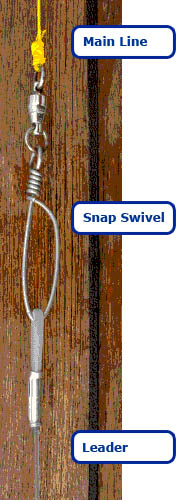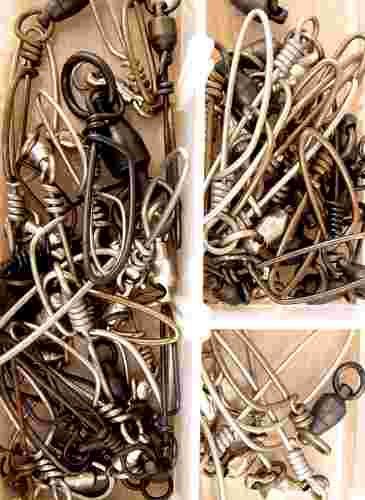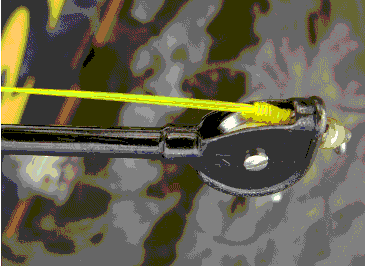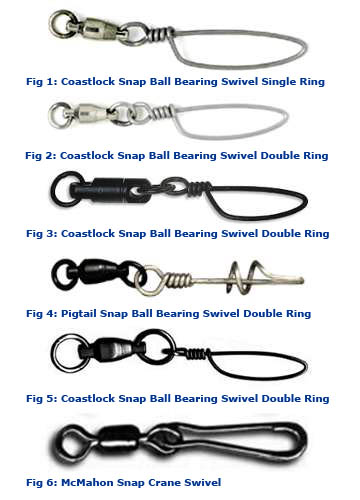07: Snap Swivels
Between The Lines - Chapter 02: The Gear

 The methods you use to connect leaders, or traces to lines are part of the chain that links the angler to the fish. You’ve taken great care to choose all previous components, and so you should with these. Every link in the chain should be as strong and reliable as possible.
The methods you use to connect leaders, or traces to lines are part of the chain that links the angler to the fish. You’ve taken great care to choose all previous components, and so you should with these. Every link in the chain should be as strong and reliable as possible.
In some situations, lines and leaders are simply joined with knots or shackles, depending on what the needs are. In most circumstances, snap swivels are used.
Invariably the snaps include an attached swivel to help eliminate line twist. They should be of an appropriate size which can take the strain that is likely to be put on it. As with most game fishing tackle, these are rated in breaking strains. As a guide, snaps should be three times the line class. While noting these factors, it’s also important the overall presentation to the fish is considered. The predators we seek are no less intelligent than many of the other species we apply this too. It’s well known in all forms of fishing, the more natural the presentation, the lighter the leader and the like, the better your chances, and so it is with the bigger, tougher fish we are chasing.
Snaps that are oversized simply add ‘baggage’ to the system and weigh it down. Keep in mind, the smaller the snap the better, and the smaller the swivel the easier it works to eliminate line twist. It should, however, be large enough not to

jam in rod tips, especially rollered ones.
 There are various types of snap swivels. All the components are constructed of stainless steel to avoid corrosion, but stainless does wear, and part of any maintenance system should include checking them. Figure 1 shows a ball-bearing swivel with a ‘coastlock’ snap which is the most commonly used. However, you will notice the only difference between figure 1 and 2 is the swivel in the
There are various types of snap swivels. All the components are constructed of stainless steel to avoid corrosion, but stainless does wear, and part of any maintenance system should include checking them. Figure 1 shows a ball-bearing swivel with a ‘coastlock’ snap which is the most commonly used. However, you will notice the only difference between figure 1 and 2 is the swivel in the  latter has two welded eyes and is far less prone to tangling than the former. There are several configurations varying between brands, but certainly, ball bearing swivels should always be used, unlike the swivel in figure 6 which uses a crane swivel and not ball-bearing.
latter has two welded eyes and is far less prone to tangling than the former. There are several configurations varying between brands, but certainly, ball bearing swivels should always be used, unlike the swivel in figure 6 which uses a crane swivel and not ball-bearing.
Colour selection should also be considered. The choice is usually chrome or black, with black the preferred colour as it doesn’t flash in the sunlight. This can ‘spook’ some species and attract several with teeth that may result in a bite-off, and thus losing valuable terminals such as lures and rigs.
The snaps should be in proportion to the swivels used. Figure 5 shows a swivel that is too big for the size of the snap and gauge of wire used. The wire snap is often the weakest link, offset by using heavier than normal gauge wires which are often custom-made.
The configuration of snaps also varies according to the circumstances in which they are used. The ‘coastlock’ types may be opened accidentally if used in the connection between a leader and wind-on, so what is known as a ‘pigtail’, (see figure 4), may be used.





